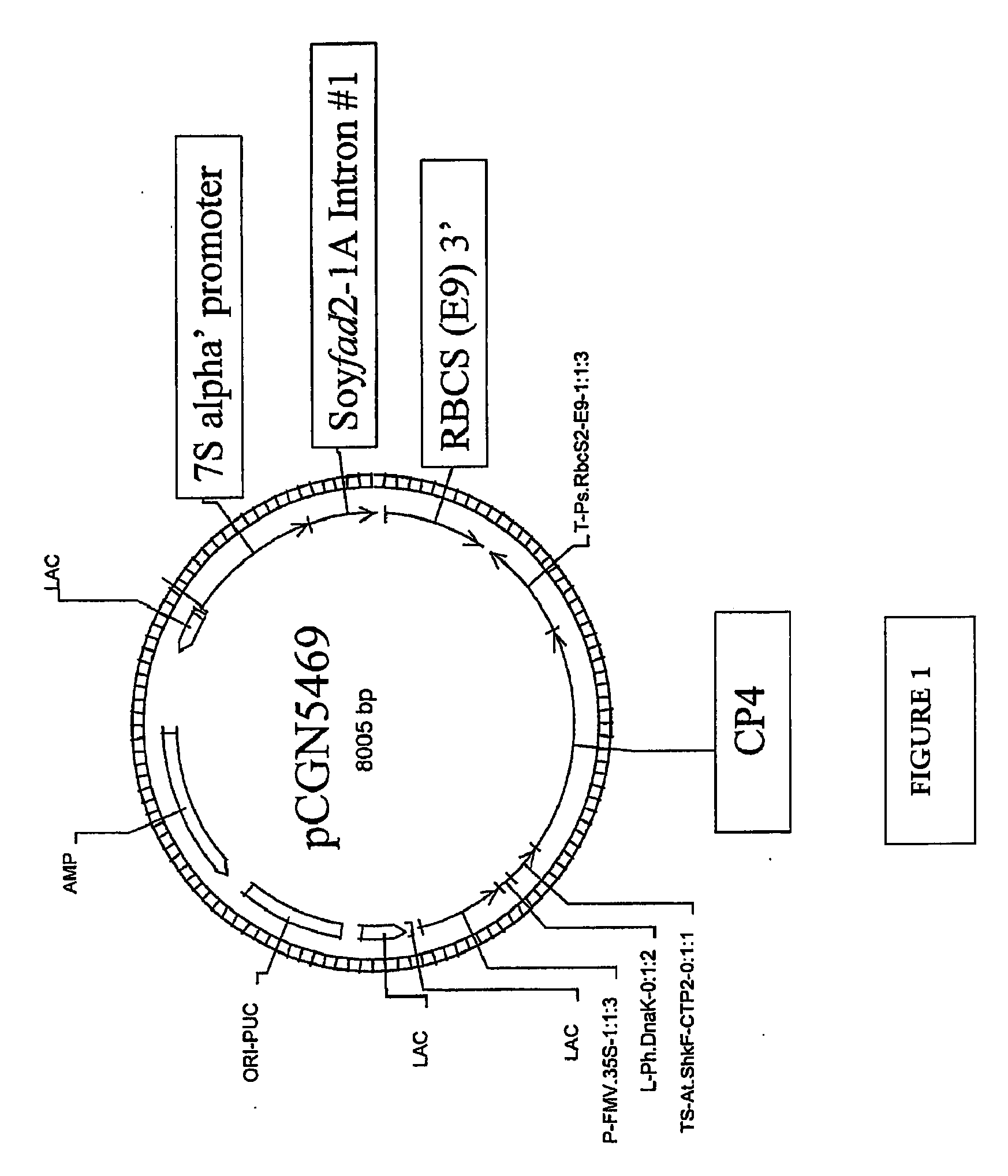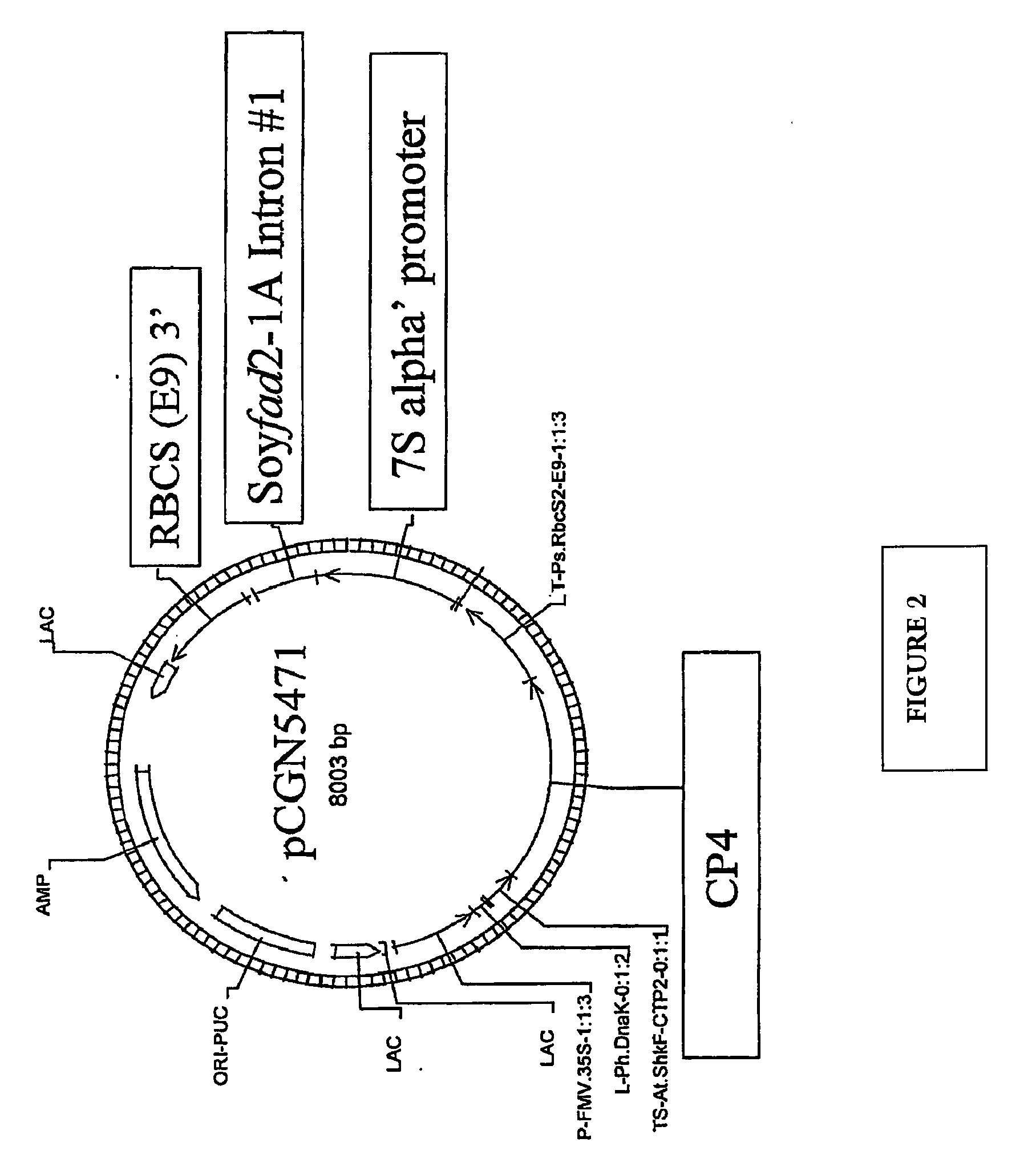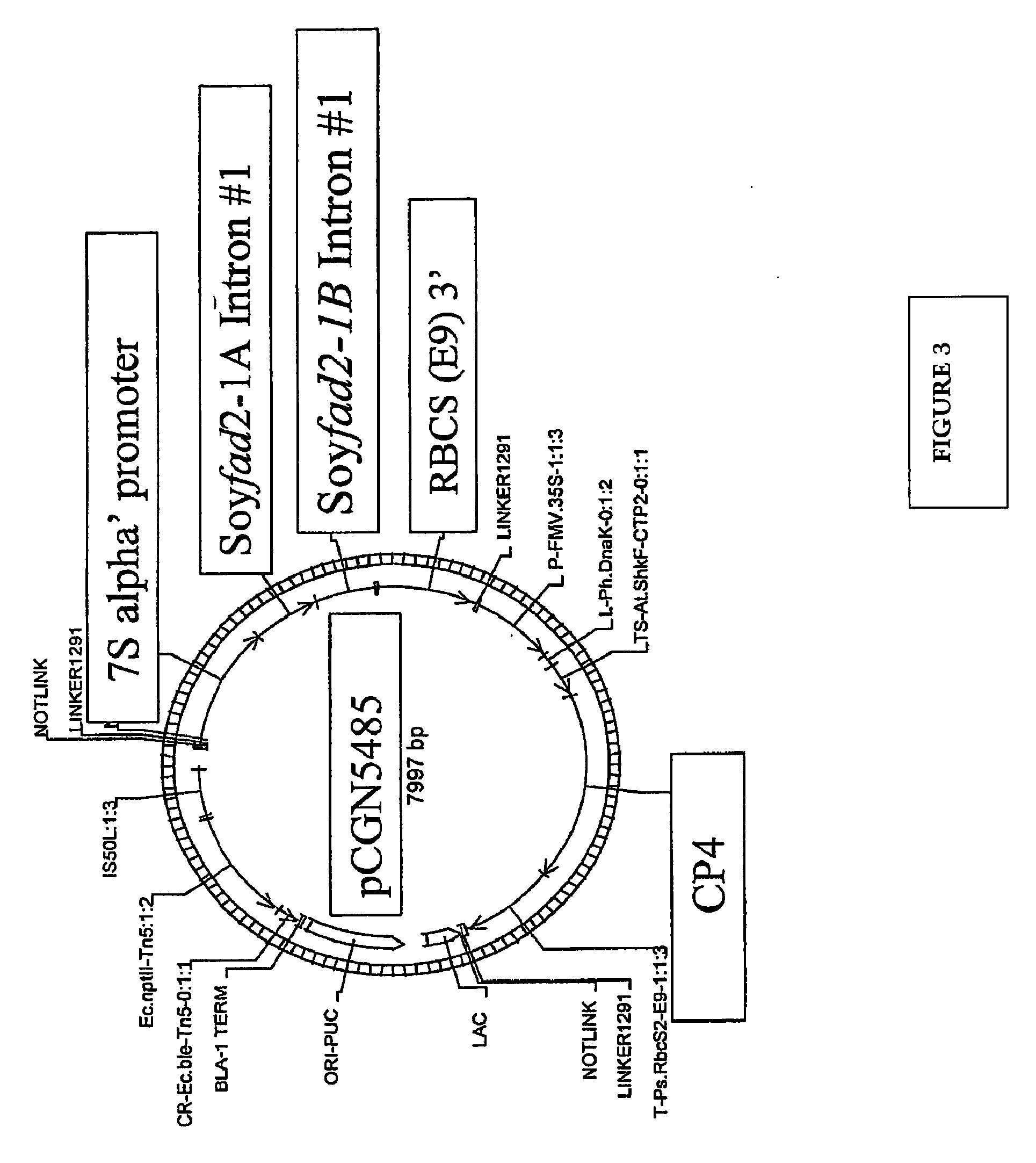Soybean Seed And Oil Compositions And Methods of Making Same
a technology of soybean oil and composition, which is applied in the field of making soybean plants, can solve the problems of insufficient availability of soybean oil, lack of important food quality properties, and high price of prior soybean oil, and achieves the effects of improving the quality of soybean oil
- Summary
- Abstract
- Description
- Claims
- Application Information
AI Technical Summary
Benefits of technology
Problems solved by technology
Method used
Image
Examples
example 1
Isolation of FATB-2 Sequences
[0191]Leaf tissue is obtained from Asgrow soy variety A3244, ground in liquid nitrogen and stored at 80° C. until use. Six ml of SDS Extraction buffer (650 ml sterile ddH20, 100 ml 1 M Tris-Cl pH 8, 100 ml 0.25M EDTA, 50 ml 20% SDS, 100 ml 5M NaCl, 4 μl beta-mercaptoethanol) is added to 2 ml of frozen / ground leaf tissue, and the mixture is incubated at 65° C. for 45 minutes. The sample is shaken every 15 minutes. 2 ml of ice-cold 5M potassium acetate is added to the sample, the sample is shaken, and then is incubated on ice for 20 minutes. 3 ml of CHCl3 is added to the sample and the sample is shaken for 10 minutes.
[0192]The sample is centrifuged at 10,000 rpm for 20 minutes and the supernatant is collected. 2 ml of isopropanol is added to the supernatant and mixed. The sample is then centrifuged at 10,000 rpm for 20 minutes and the supernatant is drained. The pellet is resuspended in 200 μl RNase and incubated at 65° C. for 20 minutes. 300 μl ammonium a...
example 2
Suppression Constructs
[0195]2A. FAD2-1 Constructs
[0196]The FAD2-1A intron #1 (SEQ ID NO: 1) is cloned into the expression cassette, pCGN3892, in sense and antisense orientations. The vector pCGN3892 contains the soybean 7S promoter and a pea rbcS 3′. Both gene fusions are then separately ligated into pCGN9372, a vector that contains the CP4 EPSPS gene regulated by the FMV promoter. The resulting expression constructs (pCGN5469 sense and pCGN5471 antisense, depicted in FIGS. 1 and 2, respectively) are used for transformation of soybean.
[0197]The FAD2-1B intron (SEQ ID NO: 2) is fused to the 3′ end of the FAD2-1A intron #1 in plasmid pCGN5468 (contains the soybean 7S promoter fused to the FAD2-1A intron (sense) and a pea rbcS 3′) or pCGN5470 (contains the soybean 7S promoter fused to the FAD2-1A intron (antisense) and a pea rbcS 3′) in sense and antisense orientation, respectively. The resulting intron combination fusions are then ligated separately into pCGN9372, a vector that contai...
example 3
[0207]3A. Antisense Constructs
[0208]Referring now to FIG. 7, soybean FATB-2 non-coding sequences (SEQ ID NOs: 44-47), FATB-1 non-coding sequences (SEQ ID NOs: 29-37), and FAD2-1 non-coding sequences (SEQ ID NOs: 1 and 5-6) are amplified via PCR to result in PCR products that include reengineered restriction sites at both ends. The PCR products are cloned directly in sense and antisense orientation into a vector containing the soybean 7Sα′ promoter and a tml 3′ termination sequence. The vector is then cut with an appropriate restriction endonuclease and ligated into pMON80612 a vector that contains the CP4 EPSPS gene regulated by the FMV promoter and a pea Rubisco E9 3′ termination sequence. The resulting gene expression construct is depicted in the bottom most construct of FIG. 7 and is used for transformation using methods as described herein.
[0210]An aspect of the present invention includes a DNA construct that assembles into a recombinant transcription u...
PUM
| Property | Measurement | Unit |
|---|---|---|
| volume | aaaaa | aaaaa |
| volume | aaaaa | aaaaa |
| volume | aaaaa | aaaaa |
Abstract
Description
Claims
Application Information
 Login to View More
Login to View More - R&D
- Intellectual Property
- Life Sciences
- Materials
- Tech Scout
- Unparalleled Data Quality
- Higher Quality Content
- 60% Fewer Hallucinations
Browse by: Latest US Patents, China's latest patents, Technical Efficacy Thesaurus, Application Domain, Technology Topic, Popular Technical Reports.
© 2025 PatSnap. All rights reserved.Legal|Privacy policy|Modern Slavery Act Transparency Statement|Sitemap|About US| Contact US: help@patsnap.com



